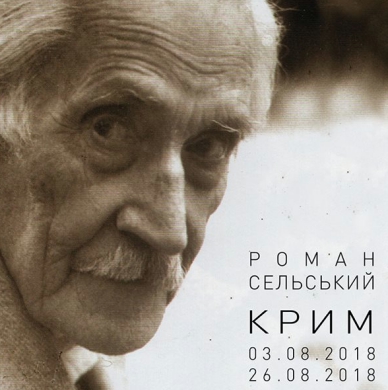To get a sense of Roman Selsky’s style, artistic hand, and mood, we need to look at the particular time and environment in which he lived and worked. The past of this future artist began on May 21st, 1903 in the town Sokal – now located within Ukraine’s Lviv province. He was the fourth and youngest child of lawyer Julian Selsky and his wife Julia Shtokel’ and so was part of a family of educated and intelligent people where important traditions were kept. Roman’s first educational steps were taken at home. Along with older brothers Stephan and Feliks, he studied music, foreign languages, and drawing. In 1913, he started private school at Lviv’s Niemec Gymnasium – and so, his formal introduction to art began. His first advisor in the world of painting was his first art teacher, Mr. Shonstowsky. His sources on inspiration included Oleksa Nowakiwsky, Kazimierz Sikhulsky, and Josef Pankewych. Young Roman was gradually introduced to Lviv’s art scene of that time, a post-war and post-imperial world flooded with different socio-political processes and realities.
After Lviv, there were studies in Krakow at its Academy of Fine Arts. There, a number of Polish artists, including Woicekh Weiss, Ignazio Penkowsky, Frederick Patch, and Ksaveriy Dunikowsky had an impact on young Roman as did the time spent in the workshops and studios of Joseph Meggofer, Josef Pankewych, and later Felician Kowarsky. Thanks to his time in Krakow, Selsky developed a good knowledge of painting, composition, color, and art history. Being a student of Megoffer, Selsky adopted the Secessionist art movement’s ideas and understanding of style, decoration, ornament, flatness, and linearity. At the same time, Selsky did not ignore the movements of Fauvism, Formalism, and Constructivism born in the early 20th Century.
While living in Paris – and then for short-time in Gdansk, Selsky improved his technique: from his work with color, placement, and composition all the way to the artistic analysis, thoughtfulness, cold calculation, and dynamism he applied to his work. He attempted to “lose” the material identity of his objects to contrast the reality of abstraction with its opposite.
Selsky continues working on developing his style and after returning to Lviv in the 1930s. Searching. Drawing continuously. Painting without interruption. Communicating with other artists, keeping in touch with each other, and exchanging opinions. The 1930s saw the creation of the Association of Independent Ukrainian Artists in which Selsky took an active part.
If we were to talk about the public reviews of his work those days, they were very different: from purely negative to absolutely positive. However, despite the difference in tone, reviewers pointed out that Roman Selsky the artist was a bright ray in the otherwise gray of Galician daily life.
It should be noted that the peak of Selsky’s creative growth came between the 1950s and 1970s. As socialist realism and hermeticism were the leading Soviet styles of the time, Selsky tried to combine them with everything else he had learned during his time in Paris. The dynamics of color, light, and form found embodiment in each of his new artworks. Two main themes dominated his art: the Carpathian Mountains – where Selsky found energy, inspiration, and ideas, as well as a place to calm his thoughts and emotions, and Crimea – a place, which enriched his inner world and where he also found spiritual rest.
At the same time, Selsky blossomed as a teacher. He became an example for many young artists. His influence on the Lviv art world was enormous. A peculiar “Selsky School” even developed.
The exhibition “Roman Selsky. Crimea (in the framework of the “Grand Masters” project)” represents the artworks of Selsky’s most creative period, in particular, those devoted to Crimea.
The solace of the sea – provided an acute sense of beauty which intensified an underlying feeling of loneliness – and yet at the same time, the sea was a source of romantic dreams in the form of ships, indistinguishable holidaymakers, and places of rest. He combined a very realistic way of painting with his smooth and even blurry shapes and images. Crimean landscapes and places fade under Selsky’s brush. They are both calm and close, letting our imagination feel the warmth of the sun, the noise of the wind, or the flapping birds’ wings … There are no loud cries or motives for deep reflection. Only calm. Here and now. The apolitical Selsky is also present. At times, it seems that he paints not the Crimean coast, but the coast near Nice or Hel where he worked and rested together with Turyn and Reich in his youth.
His color scheme is intermixed with blueish-purple and pinkish hues. These are the colors that dominate his series of work on Crimea. They are reassuring and yet, at the same time, add dynamism to each smear of paint.
The dynamism of his work has been preserved in the artist’s subsequent work. Perhaps it may have seemed repetitive. Although, this is exactly what we call “the author\'s hand.” Up until the end of his life, Selsky painted all the time and he painted a lot. His first true love of painting never disappeared ... Until the very end – February 3rd, 1990. Or perhaps he is still painting?
Viktoriia Vaslavska-Panas
